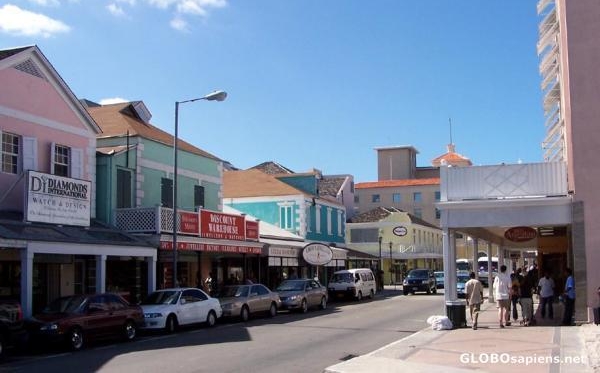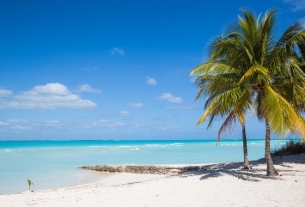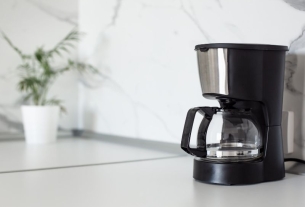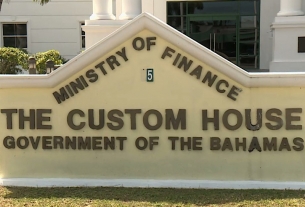
The Bahamas – despite its close proximity to the United States, along with the
convenient facts that English is the official language and the Bahamian dollar
is on par with the U.S. dollar – is an exotic vacation destination, unlike any
other.
A few years ago, the Bahamas Ministry of Tourism
launched an ad campaign (primarily targeting its North American market) with the
slogan, “Just Off the Coast of Familiar”. It is an accurate tagline for the
Bahamas which is a foreign island getaway close to home.
But even with that comfortable familiarity, you might want to keep these dos and
don’ts in mind when visiting The Bahamas.
DOS
Do stop by the Ministry of Tourism booth at Nassau’s International airport
upon arrival, especially if it is your first time visiting The Bahamas. They
have informative brochures, maps and very friendly tourism professionals who can
answer any questions you may have.
 Do ask the taxi driver how much it will cost to get to where you want to go.
Do ask the taxi driver how much it will cost to get to where you want to go.
Some Bahamas taxi drivers are notorious for over-charging guests, or taking the
long route just to make an extra buck. The taxi fares to many popular locations
are posted on a fare schedule at the Nassau’s main airport, which you should
review before venturing off.
Do make sure your cabbie is a licensed taxi driver. The license would be
hanging, or taped, right on the front dashboard. The best way to catch a cab is
by asking the people at the hotel or restaurant to hail one for you. It is not
always so easy to catch cabs on the street, like in major cities in the United
States or Europe.
 Do bring sunscreen, sunglasses and a hat, especially in the summer. It can get
Do bring sunscreen, sunglasses and a hat, especially in the summer. It can get
very… very hot in the Bahamas and the afternoon sun can be unrelenting. Even
if you “never burn,” believe us… you can and will if you are out long enough
in the Bahamian sun.
Do stay on the beaten path. Most areas that tourists would visit in The Bahamas
are safe, but there are some areas, especially in Nassau, where it is best not
to go. If you are taking a jitney, be sure you are taking the #10 bus. Other
routes will take you into the bowels of Nassau where you won’t find much of
anything to see or do anyway.
Do familiarize yourself with a little Bahamian jargon. Yes, English is the
official language of The Bahamas, but Bahamians have their own unique way of
speaking it. The letters V and W often get swapped for instance and words like
this and that become dis and dat. Plus, there are many local words and phrases
that pepper a typical conversation with a Bahamian, like “boongie,” “sip sip,” “yinna,”
“chirren” and many others.
 Do go to Arawak Cay (known as the Fish Fry or just “the Fry”) if visiting
Do go to Arawak Cay (known as the Fish Fry or just “the Fry”) if visiting
Nassau. It is an authentic Bahamian location just outside downtown Nassau that
features a number of little native bars and restaurants serving delicious
tru-tru Bahamian food and drink. Be sure to try a gin & coconut water drink, a
home-made lemonade, or one of the local beers – Kalik or Sands, all are Bahamian
traditions.
Do try to experience more than Nassau, Freeport or Paradise Island. While there
is plenty to do in these areas, most tourists never see what is known as the
“real Bahamas”. There over 700 islands and cays, some of them offering
spectacular beauty and experiences that you will not find in the major tourist
areas, or anywhere else in the world, for that matter. You can make a day trip
to Andros or Harbour Island on a fast ferry from Nassau. You can also fly from
the major islands to a number of the out islands (called Family islands) for
very reasonable rates. Do yourself a favour and do a little “island-hopping”.
 Do try some of the native fruit, like sapodillas, sea grapes, mangos, sugar
Do try some of the native fruit, like sapodillas, sea grapes, mangos, sugar
apples and guineps. Except for sugar apples, which are only available for a
short time during the year, most of these fruits are quite abundant and unlike
anything you’ve tasted before.
Do sample native Bahamian fare. On most islands there are a variety of
restaurants serving food from around the world. In Nassau, for example, you can
get good Chinese, Indian, Belgian, Mexican or French cuisine. But the best
eating will be the many different types of conch dishes, local grouper, snapper
and lobster. You haven’t really tasted seafood until you’ve savoured the taste
of freshly caught fish and lobster from the unbelievably clear waters of The
Bahamas. And a spicy conch salad is a must.
DON’TS
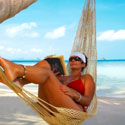 Don’t be in a hurry. The Bahamas has a laid back atmosphere, which is
Don’t be in a hurry. The Bahamas has a laid back atmosphere, which is
actually quite nice for a vacation. Things tend to happen a bit slower than many
people, especially Americans, might be accustomed to, so just go with the flow.
There is even a saying that things in The Bahamas operate on “Bahamian time”,
which means not on time. Service at restaurants may be a little slower, it might
take a few minutes longer to get your car from the valet, and your hotel may not
be as prompt in accommodating your requests. Remember, they’ve been going at
this pace for over 500 years and you are not going to speed things up in one
visit. So, relax, after all, that’s what you’re here for.
Don’t over tip. All hotels in the Bahamas charge mandatory service fees and
almost all restaurants automatically add a 15% tip to your bill. Of course, you
can leave a little extra should you desire to do so, but it is not necessary.
Don’t plan on parading down Bay Street (the main shopping district in Nassau) or
through your hotel, or other public areas in your bathing suit or bikini. No one
will ticket you but bathing suits are really only appropriate on the beach or
around the pool. It is considered in bad taste for men not to wear shirts and
for women not to wear cover-ups in public.
Don’t worry about bringing formal dressy clothes. Even fine restaurants will
allow you to dine in casual wear, providing you are neatly attired and wearing
shoes.
Don’t be a bad guest. While Bahamians love tourists, remember you are a guest in
their country. Many Bahamians will treat you, and expect you to act, like a
guest. Plus, Bahamians are a social people. For instance, when you get on a
jitney bus, you are likely to be greeted by several with “Good afternoon” or
“Good day”. Many a tourist has been taken aback as it is unusual for people from
big cities to hear that on a bus back at home. When conversing with Bahamians
don’t forget little pleasantries, like “thank you,” “pleased to meet you,” “good
morning,” and “good bye”. Show an interest in Bahamian culture and history, and
be respectful of Bahamian traditions.
Don’t be insulted if you are called “honey,” “darling” or “sweetie”. These terms
do not have the negative or sexist connotation that they do in other countries.
It is just the way Bahamians greet each other and visitors.
Don’t over plan. There are a lot of interesting things to see and do in The
Bahamas. You may only discover some of them once you arrive. While it is good to
have a general idea of where you want to go and what you want to do, make sure
you leave some time for opportunities and spontaneous adventures.
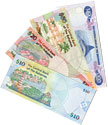 Don’t worry about exchanging money if you are from the United States. U.S. money
Don’t worry about exchanging money if you are from the United States. U.S. money
is valued at the same rate as Bahamian money and is virtually interchangable.
Don’t be surprised if you give a shopkeeper a U.S. bill and receive Bahamian
money in your change. But do make sure you exchange all your Bahamian money
before you leave the country, unless you are keeping some as a souvenir.
Don’t go wandering around alone at night, especially women. Like mentioned
earlier, for the most part, The Bahamas is a safe destination, particularly
around the hotels, but there are bad people like anywhere else.
Don’t plan on sunbathing nude on the public beaches. Rumours of nude beaches in
the Bahamas are just that… rumours. However, if you find yourself on an
isolated patch of beach, especially on one of the family islands, you might be
able to get away with it.
If you have some dos or don’ts you think should be added to this list, please
send them to us. We’d love to hear from you.
